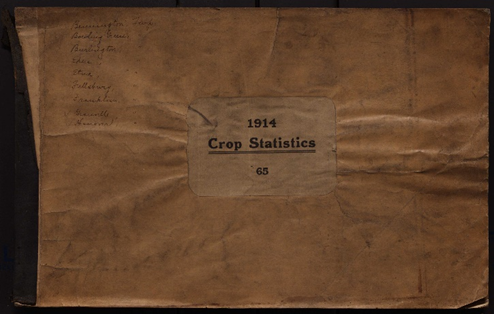Crop Statistic Report
It’s that time of year again-fried foods, fun games, and
entertainment, otherwise known as Fair Season! It’s the opportunity for farmers
to show off their best livestock, and for the rest of us to marvel at how cute
the animals are. So for this month’s “Living in the County Archive” we are
celebrating all that goes in to agricultural production and studying the 1914
Crop Statistics volumes.
The Records and Archives department is currently in possession of Crop Statistics Volume 65, which is for the year 1914. Volume 65 is broken up in to three books by township. Township numbers 1-10 include: Bennington, Bowling Green, Burlington, Eden, Etna, Fallsbury, Franklin, Granville, and Hanover. Township numbers 11-19 include: Harrison, Hartford, Hopewell, Jersey, Licking, Liberty, Lima, McKean, and Madison. Lastly, township numbers 20-27 include: Mary Ann, Monroe, Newark, Newton, Perry, St. Albans, Union, and Washington.
But that is just a summary of all these volumes record. The
images below show an entire series of recordings for a period.
*image: mold before*
*image: mold after*
And here is a photo of the dry sponge used to clean the
records compared to a brand new sponge before any use:
The residue found on the records is most likely mold,
although we are unable to verify this without specialized testing, and it is
caused by improper storage conditions. Mold thrives in the damp and the dark.
Basements and attics are perfect breeding grounds for mold because of their
unstable temperatures and humidity. Many of the county’s historical records
were stored for decades in the courthouse attic where conditions were not
favorable, and the records paid the price. Luckily, they are now housed in our archive
where temperature and humidity conditions are optimal, and molded records are
able to receive cleaning treatment like these Crop Statistics volumes.
To learn more about the Crop Statistics Records and take a
look at the volumes, you can stop by or make an
appointment to visit the office by contacting 740-670-5121, or by email at archives@lcounty.com.









.jpg)
